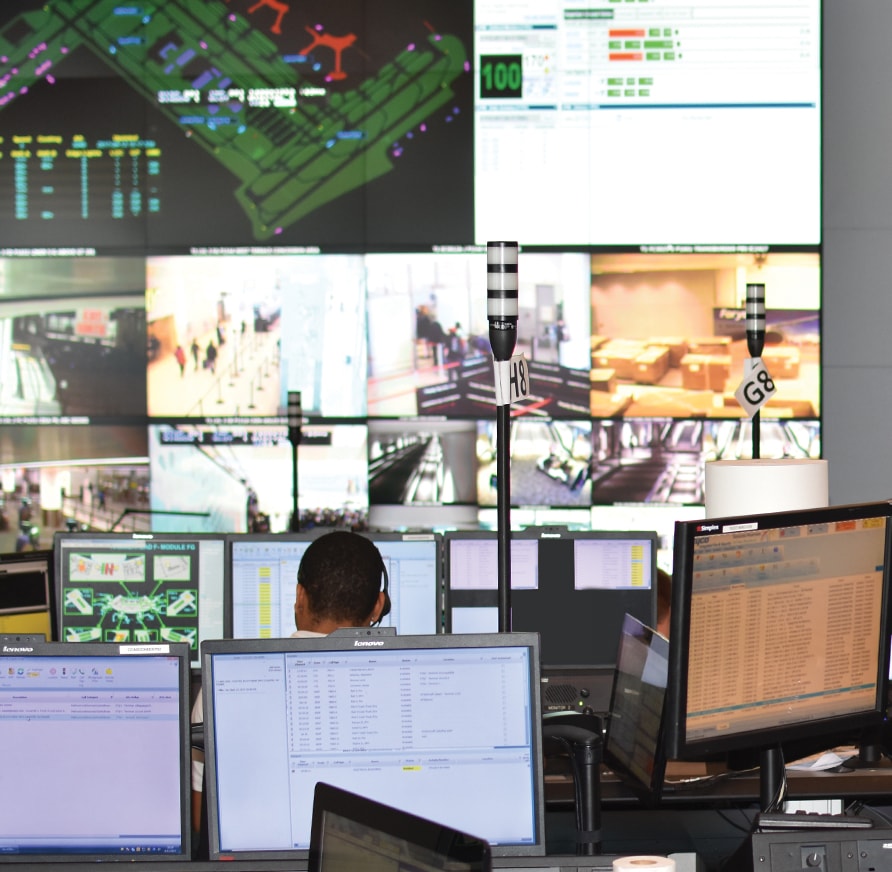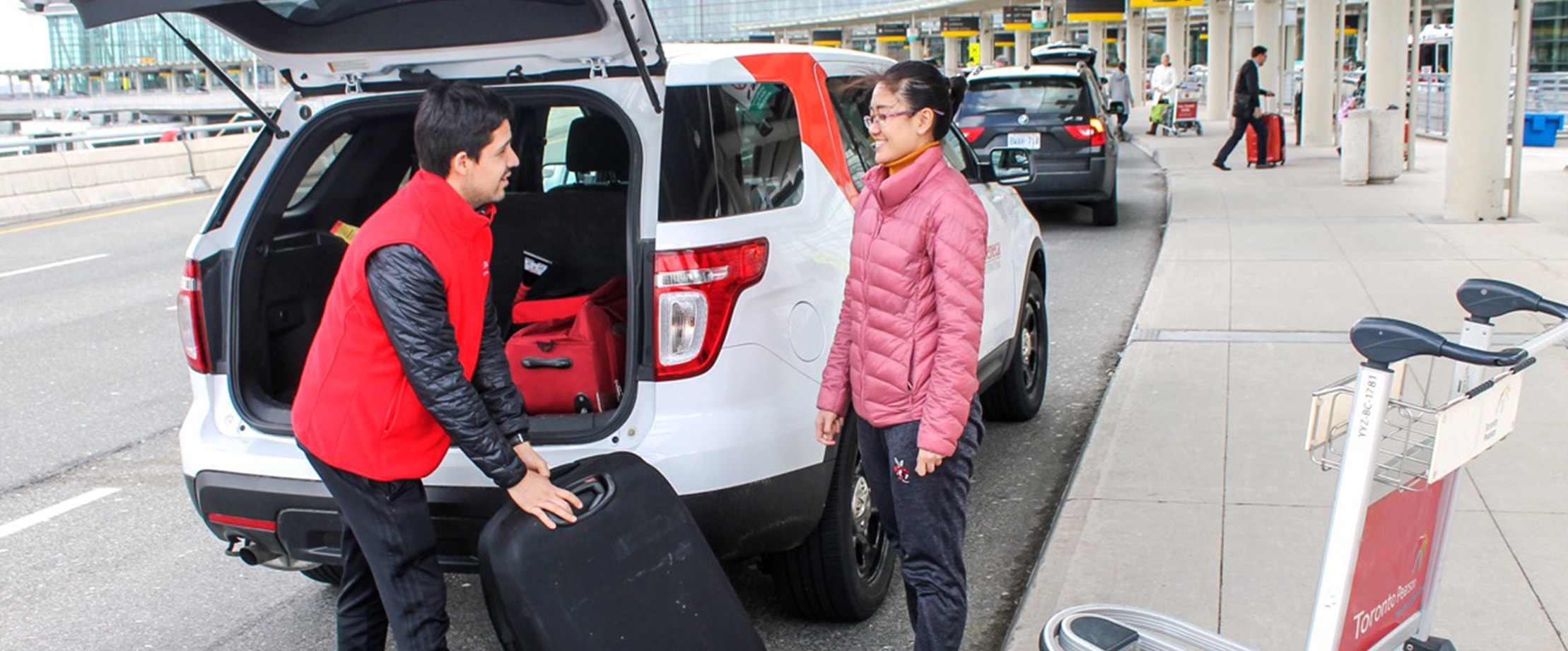At Toronto Pearson, we embrace our obligation to manage growth sustainably as we move closer to our goal of being one of the leading global airport hubs in the world. We respect the needs and values of all our stakeholders while balancing the vital dimensions of social, economic and environmental responsibility. That’s what being a leader is all about – and it’s critical to maintaining our social licence to grow and operate.
Sustainability is at the heart of Toronto Pearson’s corporate strategy and growth plans. We manage it as an integral part of our business, in pursuit of six strategic goals related to safety, engaged people, passenger and customer service, financial sustainability, aviation growth and corporate responsibility.
We publish our performance in this report and in a downloadable Sustainability Management Approach and GRI Index. Also included in the Sustainability Management Approach and GRI Index are our material topics (i.e., specific priorities falling within our strategic goals), which were last reviewed in 2015 and align with specific GRI topics. To ensure that we’re focused on topics that are top of mind to our most important stakeholders, and that we consider our current and expected impacts, we plan to conduct a comprehensive materiality assessment by 2020.
For 2017 reporting purposes, we considered ongoing feedback from our stakeholders, gathered through surveys and other methods outlined in the Stakeholder Engagement section.
The following sections describe in more detail what we’re doing in key areas of sustainability.

Photo: Air Canada/Brian Losito
Safety
The safety and security of everyone who visits or works at our airport is a top priority. We have a saying at Toronto Pearson: “Be Safe. You mean the world to someone.” This reminds us of why we need to be vigilant about safety. Zero injuries is the ultimate goal, and every employee plays a role in helping achieve it.
Our Safety Policy sets out guiding principles. The Toronto Pearson Safety Program comprises seven safety systems that include policies, programs and training relevant to the various aspects of airport operations: aviation safety; security; terminal and groundside safety; environment; technical and construction; occupational health and safety; and emergency management. As of January 1, 2017, all contractors are required to be COR certified, as confirmation that their health and safety program meets provincial standards and has been evaluated by a certified auditor.
Safety performance is tracked through the Toronto Pearson Safety Index, which measures employee lost-time injuries per million passengers. We strive to achieve at least a five per cent reduction in injuries each year. We also ask employees to complete an annual safety climate survey, which assesses the overall culture and attitudes toward safety at our airport and identifies opportunities for improvement.


Engaged People
Of roughly 49,000 people directly employed at Toronto Pearson, approximately 1,600 worked at the GTAA as of December 31, 2017. Most of our employees work in management, technical, administrative and other operational roles, while some are seasonal employees hired for deicing and airfield maintenance. The majority are unionized, represented by either Unifor Local 2002 or the Pearson Airport Professional Fire Fighters Association.
To achieve our mission and vision, Toronto Pearson needs to attract, engage and reward a high-performing workforce, developing talent internally and casting a wide net in recruiting new talent. Our people strategy focuses on five areas, each of which has specific action plans, as well as one-year and five-year goals:
- Plan and attract the right talent for now and for the future.
- Develop and build individual potential and sustainable talent pipelines.
- Lead and engage to inspire individual and collective success.
- Align and reward to leverage talent and deliver business results.
- Equip and support GTAA colleagues with the right tools and expertise.
Employee feedback survey results are a strong indicator of how we’re doing and what we need to change. Since 2015, our engagement score has risen from 58 per cent to 69 per cent. We attribute much of the increase to having acted on employee feedback. This included improving business processes that help us work more efficiently, as well as building the capabilities of our people managers, onboarding new hires more effectively and learning new ways to solve everyday problems.

Social Responsibility
Toronto Pearson plays a vital role in Canada and in the life of our surrounding communities. Being a good neighbour is central to our mandate and critical for maintaining our social licence to operate and grow. Our key areas of focus can be summarized as follows:
Stakeholder engagement – Our stakeholders keep us abreast of the latest changes, challenges and opportunities affecting Toronto Pearson, our industry, surrounding neighbourhoods and the regional economy. We gather feedback and collaborate with our diverse stakeholders through industry committees, passenger surveys, employee forums, social media outreach, public meetings and tours, and more. Taken together, these efforts help ensure we’re in the best possible position to plan strategically and act responsibly.
Noise management – Noise management is a top concern for our communities, and we continue to evolve our approach to addressing the issue. Following a two-year process that included extensive study and community engagement, we released our 2018–2022 Noise Management Action Plan in 2017. We’re also making progress on initiatives such as a three-phase Noise Mitigation Initiatives Engagement Plan with NAV Canada.
Economic impact – The GTAA employs about 1,600 people, while tens of thousands more are directly employed at Toronto Pearson. As a key player in the local, regional and national economies, we’re working to grow employment opportunities in tandem with the growth of our airport – and to develop new ways of increasing connectivity to the world’s economies.
Community investment – The GTAA invests in social good and community-building initiatives through the Propeller Project, Toronto Pearson’s community investment program. In particular, we try to help local unemployed and underemployed people gain the skills, connections and opportunities they need to find more meaningful jobs and potential careers.

Environmental Management
We’re the first to acknowledge that an airport affects local ecosystems and contributes to climate change. However, there are many things we can do at Toronto Pearson to minimize our environmental impact and preserve natural resources – and we take strong action on them.
Our Environmental Policy sets out the key elements of our approach. In addition to complying with all applicable standards and regulations, we maintain an ISO 14001:2015 certified environmental management system (EMS), which helps us set performance targets and pursue continuous improvement. Our EMS focuses on three areas:
Climate change – Reducing greenhouse gas (GHG) emissions and taking measures to ensure our facilities are ready for the expected future effects of climate change. We’re working toward reducing our GHG emissions from 2006 levels by 20 per cent by 2020, and by 80 per cent by 2050.
Healthy environment – Mitigating the environmental impacts of airport operations by managing issues such as stormwater runoff and the prevention of wildlife strikes by aircraft.
Resources – Tracking the resources we use and the waste we generate, as part of a broader evolution toward a circular economy that minimizes waste and gets maximum value out of the materials we consume before disposing of them.
The GTAA works with air carriers, concession holders and other commercial businesses that operate at Toronto Pearson to advance sustainability initiatives. We work with our airline partners to promote processes and technologies that lower aircraft fuel burn, which is a large contributor to GHG emissions. At the same time, reducing fuel consumption clearly represents a substantial cost-savings opportunity for our partners.
- 102-12
- 102-15
- 102-29
- 102-31
- 102-49
- 103-2
Learn more about how we operate our airport responsibly
At Toronto Pearson, we embrace our obligation to manage growth sustainably. We respect the needs of all stakeholders while balancing the vital dimensions of social, economic and environmental responsibility.
